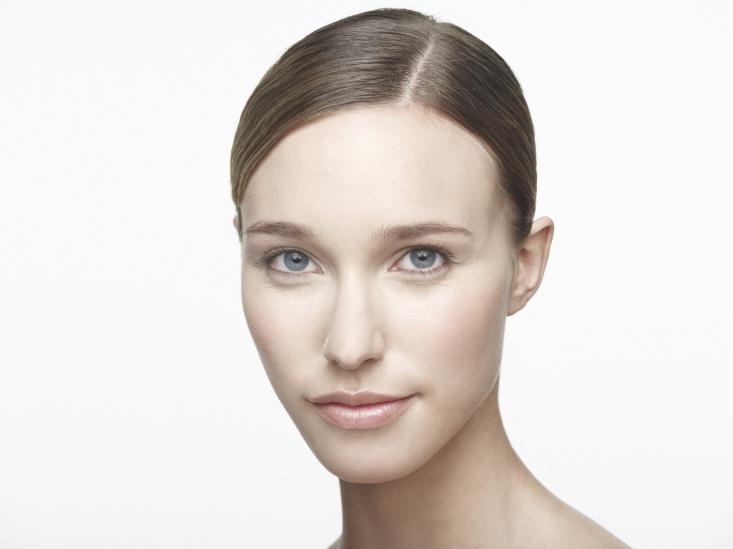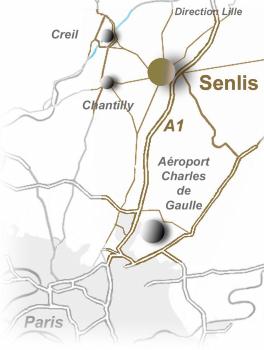AESTHETIC PLASTIC
RECONSTRUCTIVE
SURGERY
SEBASTIEN GARSON M.D
PEELING
This fact sheet was developed under the aegis of the French Society of Plastic Reconstructive and Aesthetic Surgery (SOF.CPRE) as an addition to your initial consultation, to try to answer all the questions you can ask yourself if you plan to use surgery baldness. The purpose of this document is to provide you with all the necessary and essential elements of information to help you make your decision with full knowledge of the facts. Also you is it advisable to read with the greatest attention.
Already 3500 years before our era, written on papyrus extolled the benefits of abrasive pastes: the Egyptians used a solution of milk and honey with alabaster particles. This means that any time the man and the woman wanted to erase some superficial skin imperfections (wrinkles, scars, keratoses, age spots) by smoothing the surface of their skin and try to improve or maintain fresh and rejuvenating.
This smoothing is abrasion and abrasion techniques today are:
• Mechanics: the Dermabrasion
• Chemical: these are Peels
• Thermal: the Laser-abrasion
• DEFINITION OBJECTIVES AND PRINCIPLES
Peels involve plant or chemicals according to the power of their active ingredient, depending on their concentration or in the period of application will destroy the surface layer of the skin, that is to say all or part of the epidermis and superficial dermis, up to, depending on the purpose.
Different peels
- Peeling with fruit acids (glycolic, lactic, mandelic ...)
- The so-called weak acid peels (lactic acid) which the action stops at the granular layer with an interesting effect but moderate exfoliation.
- Peels resorcinol as pulp Unna, whose active ingredient is 50% resorcinol.
- Peeling with phenol (hydroxybenzene) and croton oil concentration which allows for a light peel, medium or deep, depending on the area being treated, the severity of the defect to be corrected, the skin quality and purpose sought. The toxicity of phenol, including heart, liver and kidney, well known by your practitioner, requires an application protocol well codified.
Peeling with trichloroacetic acid (TCA) whose concentration can, again, make a light peel, medium or deep.
Goal of treatment -
- The fruit acid peels improve skin radiance.
- The light and superficial peels are peeling skin, achieve exfoliation, have an effect on leteint and produce a cooling effect. They want a portion of the epidermis:
• Scrub interest only when the superficial horny layer of the epidermis
• Exfoliation interest when the granular layer of the epidermis
- The means by or against deep peels, realize a real abrasion that can destroy the epidermis and superficial dermis, the papillary dermis is a controlled chemical burn. This control is performed by your surgeon, by choosing the type of peeling, its concentration or duration of application. It depends on the size of the defect to be corrected, the area to be treated, the skin quality and purpose.
Then the epidermal or dermal-epidermal layer restore destroyed by natural phenomena of healing from the elements of the dermal-epidermal basement membrane and related pilosebaceous: So it means a time of healing where the skin is fragile and requires careful attention . This is the restoration of the skin surface that creates a smooth, more or less by erasing the imperfections that is to be treated. In addition, the dermal-epidermal healing will with some skin retraction giving a true "tensor" skin, variable and more or less important depending on the case effect.
• BEFORE THE PEELING
The consultation aims to evaluate the application, specify the indication to inform the patient that can be treated and what does not and will explain all the facts relating to this type of intervention .
For medium or deep peels, skin preparation before surgery is important to optimize the result. Skin cleansing creams with fruit acids or vitamin A acid, antibiotic coverage, are sometimes prescribed by your surgeon for 2 or 3 weeks prior to the act to prepare your skin so that it arrives at the time of the act in the best local conditions
possible.
• TYPE OF ANESTHESIA
These terms are to be discussed with your surgeon, the act may be done:
Without anesthesia for light and superficial peels that generate a simple exfoliation by simply peeling the skin. The act is the doctor's office.
It is almost always the same for medium peels, sometimes with a little prior premedication consisting of taking a soothing or relaxing tablet.
For deeper peels, it can also be the same, or can recommend a local general anesthesia, locoregional or neuroleptic.
The procedure can be done "outpatient", ie with out the same day after a few hours of monitoring. If a hospital, usually quite short, is recommended, the entry is made the day before or the morning, with an exit at the next day or two.
The different types of anesthesia, when anesthesia is recommended:
The principle for anesthesia during a peel is seeking comfort, both for the patient and the practitioner.
This goal is easier to achieve with a general anesthesia or neuroleptic:
• Classic General anesthesia, in which you sleep completely,
• neuroleptic which is a local anesthetic depth by tranquilizers administered intravenously (vigil anesthesia). However, you can also use local anesthesia or nerve block:
• The nerve blocks are very well suited for the eyelids and the middle part of the face (forehead, nose, lips and chin). These blocks are effective and easy to handle. They consist of an injection
anesthetic around a sensory nerve that innervates skin area: This area is numb and for the duration of the act.
• The local anesthesia: a local anesthetic is injected under the skin to numb the treatment area. The sides of the face (cheek, temporal region), inaccessible for nerve blocks, respond very well to this technique.
• The anesthetic cream EMLA such an interest on the thin skin especially if abrasion is superficial. Progress is expected for this type of numbing creams.
• PEELING
After cleaning and disinfecting the skin and installation of barren fields, the product is applied according to a protocol (concentration, duration of application) for each type of peel and depending on the size of the defect to be corrected, the treatment area, the quality of the skin and the goal

AFTER THE PEELING
Of course, the consequences depend on the type of peel and depth, as we have seen previously.
Light and superficial peels are making a simple exfoliation, the suites are simple and can be applied without restriction zone with protection advice, including solar, classics.
The medium or deep peels, however, perform a controlled chemical burn that destroys the epidermis and superficial dermis. Immediately after treatment, the dermis is exposed, causing redness, swelling and oozing. Local, attentive and very careful care, based fats or dressings will be made until complete healing, resulting in 10 to 15 days. Although directed by your surgeon, the local care to avoid scabbing, that even if they are not desirable and may eventually form should not be torn to meet the underlying healing being and not risk a possible scar residual.
Then, after the 10th day care based emollient creams for sensitive skin, a suitable makeup and sunscreen are recommended to cover the red or pink appearance of the skin treated for 2-6 months. This is the restoration of the skin surface that will be made with a smooth, more or less by erasing the imperfections that is to be treated.
The skin can be uncomfortable, dry, sensitive, irritable, intolerant of conventional beauty products for several weeks.
A (anti-pruritic anti-herpetic analgesic, anti-inflammatory, antibiotic,) general treatment can be prescribed concurrently.
• THE RESULT
The fruit acid peels have a cooling effect and improve the complexion. They must be repeated, but they are obviously too light to have a decisive effect on the components of skin aging.
Light and superficial peels are skin peel. They realize exfoliation, which has an effect on the skin, producing a cooling effect and controller. This is a scrub that removes certain more or less superficial imperfections of the skin. They can be applied without restriction zone.
They have a moderate effect on the components of skin aging such as fine lines.
The medium or deep peels however, deal mainly skin from one area of the face or the entire face marked by:
signs of aging including solar (stains, elastosis, superficial or medium wrinkles).
It is a treatment of the skin surface which can, of course, be associated with processing techniques sagging skin associated with aging such as facelift, blepharoplasty. They can also be combined with other techniques such as injections of fillers or botulinum toxin.
depressed scars such as acne scars can also benefit from these peels that help smooth the skin and improve the surface irregularities.
• POSSIBLE COMPLICATIONS
With fruit acid peels and light and superficial peels, complications are exceptional: they rarely give pigmentary disorders, on the contrary, they have a rather regulator and refreshing effect on the skin.
In contrast means and especially deep peels, exposed to a number of complications:
Indeed, although made mainly for aesthetic reasons, the peels are not less skin, epidermal and dermal aggression, which involves the risks associated with any medical surgery.
By choosing a qualified and competent practitioner trained in this kind of treatment, you limit these risks without removing them completely
Fortunately, real complications are rare after a peel made in the rules. In practice, the vast majority of treatment occurs without any problem and the patient (s) are fully satisfied (s) of their income.
However, and despite the rarity, you should be aware of possible complications:
- Microbial Infection
- Pushing acne
- Grains of milia (small white cysts)
- Hyperpigmentation (especially on dark skin), early and almost always temporary, it is often due to premature exposure to the sun.
- Hypopigmentation, often ultimately occurs more rarely and later.
- Persistent redness,
- Impaired wound healing and hypertrophic scars are possible but rare. They show too deep destruction, scraping, a breach of the fragile réépidermisation the beginning of healing, infection or poorly treated late.
- Allergy: the products used for the disinfection of skin care and can also cause allergies, so it is important to consider any allergies that the patient has had during his life.
- Pain in the early days, diffuse sensation of warmth or burning at the treated area. A prescription painkillers will be made by
doctor.
-Insufficient result, especially because of the size of the defect to be corrected: in these cases, your surgeon will inform you of the benefits of a new treatment after a period of one year minimum..
In total there should not overstate the risks, but just be aware that surgery, even seemingly simple, still a small share of hazards. The use of a qualified Plastic Surgeon ensures that it has the training and knowledge required to avoid these complications, or effectively treat if jurisdiction.
These are the pieces of information that we wanted to bring you in addition to the consultation. We recommend that you keep this document, read it again after the consultation and reflect "a clear head." This reflection may raise new questions for which you wait for additional information. We are available to talk during the next consultation, or by phone, or even on the day of surgery when we meet in any way before anesthesia.
CONTACT
Contact Us
Phone : + 33344282959
Address:
7 impasse de la Passerelle 60300 SENLIS
France

Copyright SELARL Dr Garson Pages d'information- Crédits photos : Dr Garson / Libre de droits - Mentions légales
Ce site utilise des cookies à des fins statistiques - Pour en savoir plus, cliquez ICI.
SITE RÉALISÉ AVEC WEBACAPPELLA RESPONSIVE